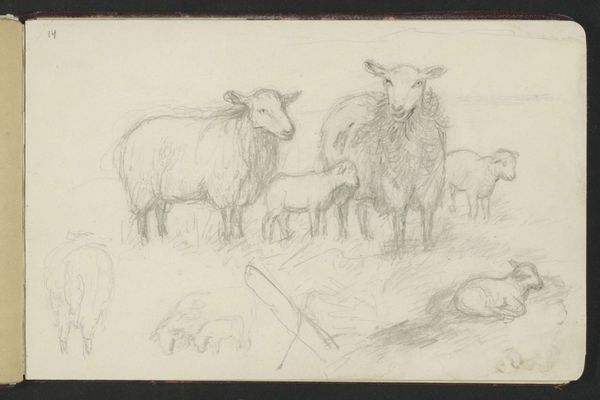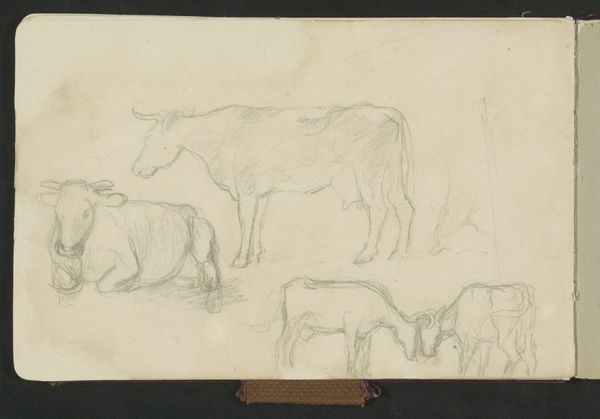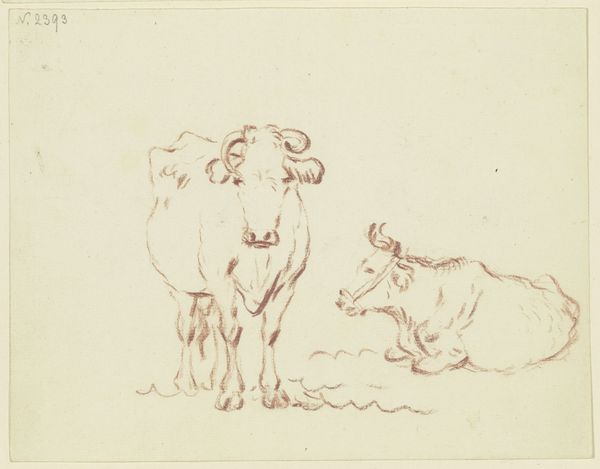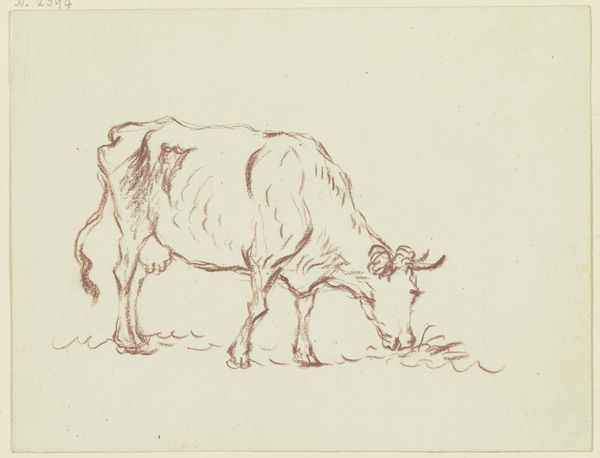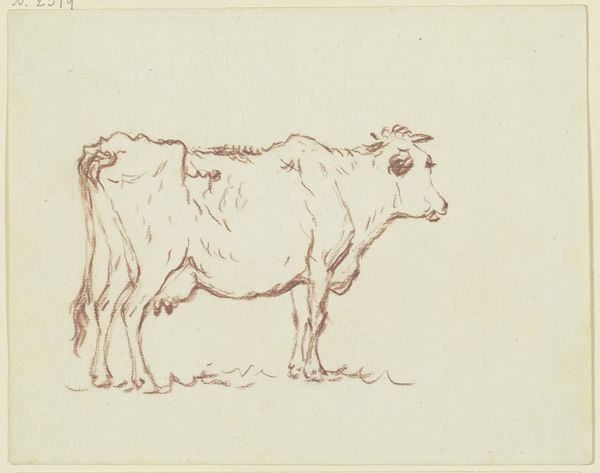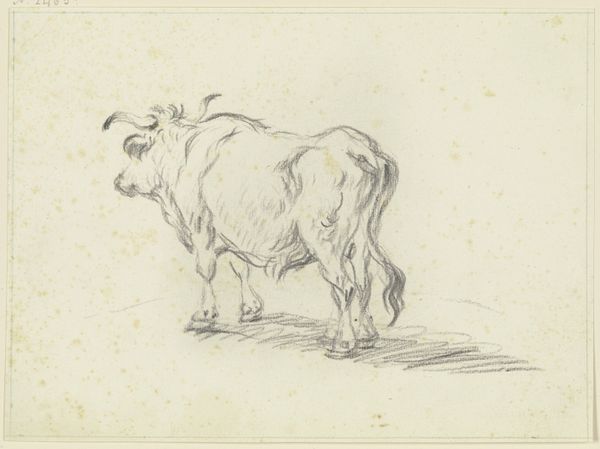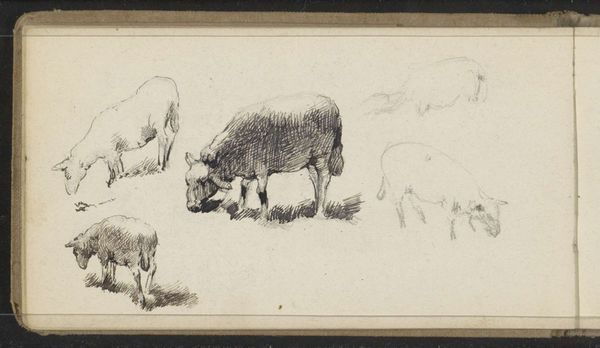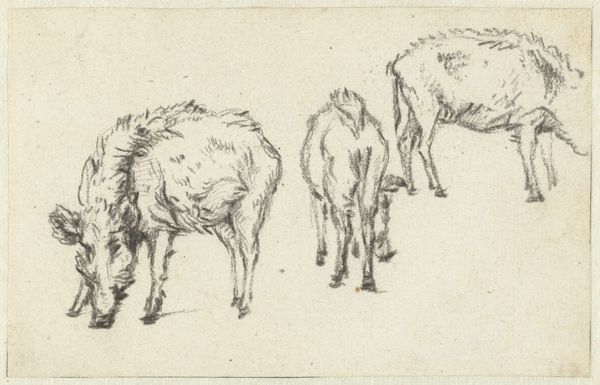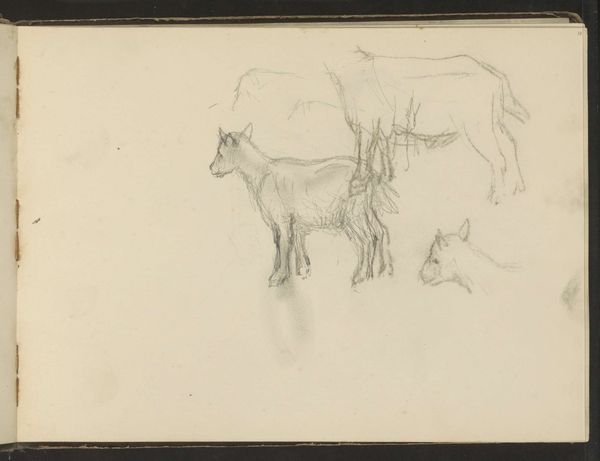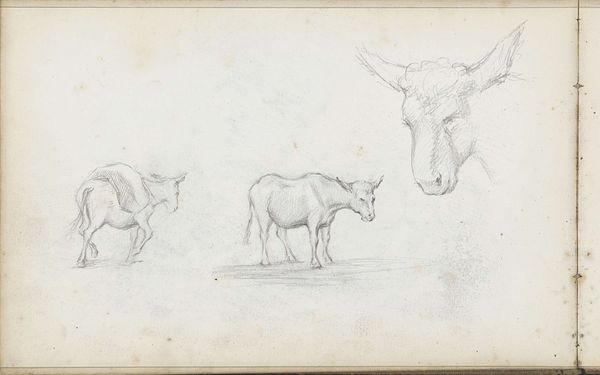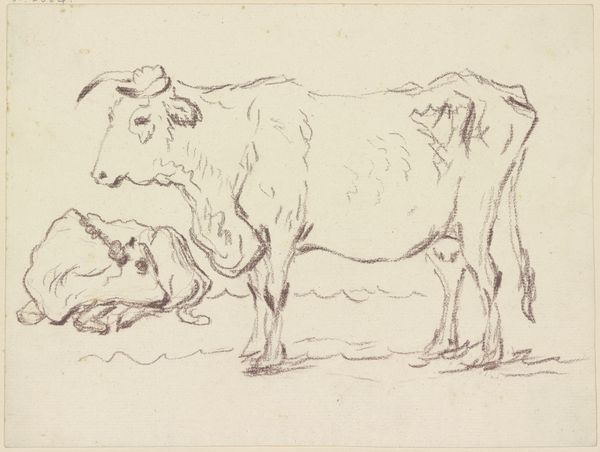
drawing, pencil
#
drawing
#
quirky sketch
#
pen sketch
#
sketch book
#
incomplete sketchy
#
landscape
#
figuration
#
personal sketchbook
#
ink drawing experimentation
#
pen-ink sketch
#
pencil
#
sketchbook drawing
#
storyboard and sketchbook work
#
sketchbook art
#
realism
Copyright: Rijks Museum: Open Domain
Abraham Teerlink made this study of oxen and a horn sometime before 1857, using graphite on paper. This is a traditional art material, of course, but its very simplicity points us to issues of labor and class. Think of the vast agricultural system of the Netherlands, which even then was dependent on animal power. The drawing captures two beasts of burden in quiet repose; their musculature and mass are clearly evident in Teerlink's precise lines. Note how economically he renders the animals, with a bare minimum of shading. This isn't a flamboyant artwork made for show. It is a working drawing, one that enabled the artist to observe and record the physical characteristics of these powerful creatures. The oxen are depicted plainly, without idealization, emphasizing their role in the material world. The artist’s close attention to their physical presence highlights the value of their labor. By focusing on the straightforward representation, Teerlink bridges a gap, and elevates both craft and fine art.
Comments
No comments
Be the first to comment and join the conversation on the ultimate creative platform.
